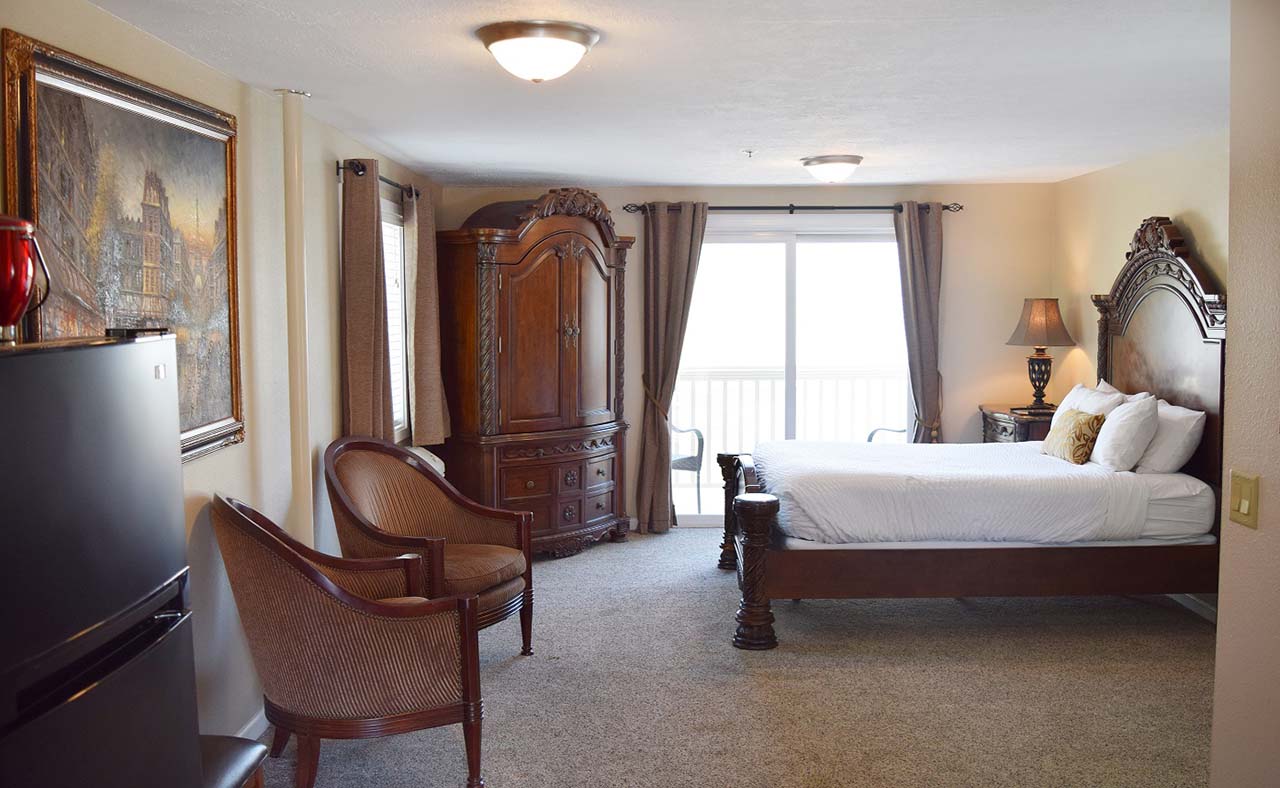
The Centennial Suite
Search Rooms
When the town was nearing its first century mark, some leading citizens felt it deserved a celebration.
The minutes of the first meeting of the Silverton Centennial committee were dated November 17, 1953. The committee was comprised of six prominent business men: Lowell Brown, Reber Allen, June Drake, Elmer Lorence, Harry Riches, and Dr. Epeneter, a dentist and the only one not connected to a pioneer family. The one woman at the meeting was Hannah Olson, a long-time elementary school teacher.
Room Amenities
- One King Bed / One Queen Bed
- Two Full Rooms
- Kitchen
- Bathroom With Shower / Tub
- Smart TV 72 Inches UHD
- Wi-Fi Internet
- Balcony
- Heat / Air Conditioner
- Coffee Maker
- Hair Dryer
- Iron & Ironing Boards Available
They elected Lowell Brown President. Mr. Brown’s great grandfather, James, was one of the first pioneers to camp on the banks of Silver Creek in 1846. Most of north Silverton is located on the Donation Land Claim of James Brown.
At that first meeting they chose the name “Silverton Centennial Association” and voted to incorporate. A local attorney, Ken Brown would be contacted to help with the legalities.
They decided to have a contest for a slogan, not to exceed 10 words. The prize would be $10. The winner was “100 Years Since Pioneers” won by Ted Hobart, himself a descendant of Oregon pioneers. It would appear on the emblem which also included a pictograph in the center showing the falls, an Indian chief, covered wagon, a rail fence and Homer’s drawing of himself on a wagon with a damsel.
One of the ideas discussed was whether to invite Clark Gable to be a guest of the festivities. Silverton is proud of the fact that Clark “Billy” Gable lived and worked here for a few months in 1922. He had a friendship with Frances Doerfler who had grown up on a farm between the Waldo Hills south of Silverton and the town of Sublimity. He spent that summer working at one of the lumber mills and lived in the Cottage Hotel (torn down in the late 1950’s).
The committee met frequently and plans progressed throughout that winter and into the spring of 1954. Dates were set. Ambitious ideas were explored and set in motion. The whole town, having caught the pioneer spirit, would eventually be involved. Surrounding communities that had been so vital in establishing the little village and helping it grow into a proper town, played their part as well.
Organizations were asked to be in charge of various plans: the American Legion would handle the Pet Parade, the teacher’s organization was asked to write the script for the Pagaent. The Rainbow girls volunteered to do ‘secretary’ work. The number of people eager and willing to help with the celebration was quite amazing.
Whiskers were grown in anticipation of the beard and whisker contest. Pioneer dresses were sewn or in some case pulled out of old trunks in the attic. Mothers sewed matching costumes for themselves and their daughters. Antiques and collections of family heirlooms were dusted off and displayed in various storefronts around town..
Fund-raising ideas included a Centennial Plate, to be designed by a high school student; Centennial buttons; pioneer sunbonnets made by various groups; glass ash trays with the emblem on the bottom; bumper stickers; decals. They seemed to have thought of everything.
The celebration would last 5 days in August, Wednesday to Sunday. The pageant was to be loosely based on Homer Davenport’s book “The Country Boy”. The script was written, sets were built. There would be two performances.
A queen would be crowned based on the number of tickets she sold to the pageant. She and her court of four princesses would, or course, ride in the parade.
The Junior Women’s Club was in charge of the Silverton Aquacade, Swimphony. Two performances were given and old-fashioned bathing costumes were modeled. One of the swimsuits belonged to the grandmother of Jack Hande, one of Silverton’s well-known historians.
The children’s Pet Parade was planned for Friday morning and a Centennial Square Dance was held that evening. The Grand Parade wound through town Saturday afternoon. It was estimated that 10,000 people viewed the parade. Judging and awarding of prizes for the Best Whiskers, Best Old-Time Costume and Best Pioneer Family took place downtown after the parade. That was followed by a barbecue dinner and 8th Annual Western Horse Show. On Sunday the festival ended with a potluck Centennial Picnic in the Coolidge & McClaine City Park.
Ambitious but so very grand, it was a celebration to honor the lives and efforts of all those hard-working, far-sighted pioneers: men, women and the children, because it takes everyone to make a town.

